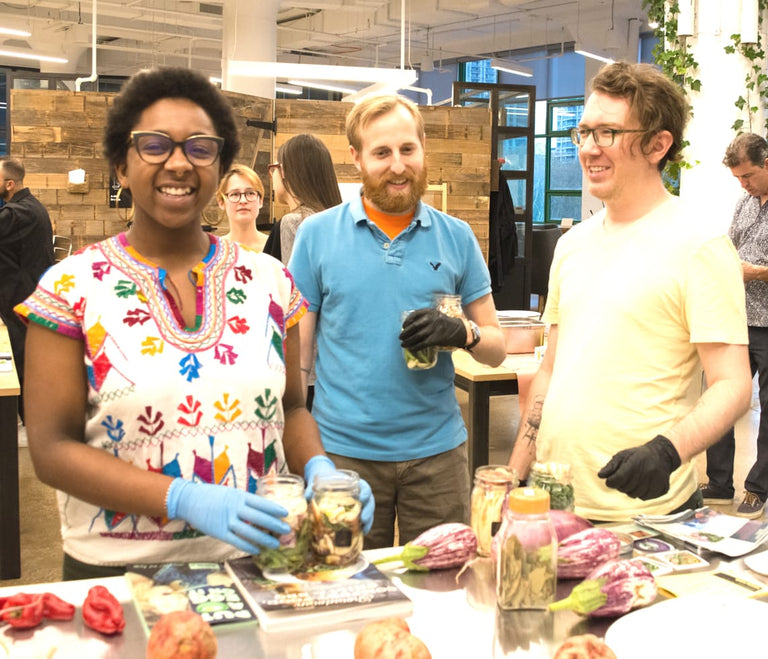Starchy vs. Waxy Potatoes and How Best to Use Variations of Both
In the midst of winter, we tend to find ourselves searching for recipes that warm our bellies as much as they serve to satisfy our palates. Often enough, these dishes include (and might even star) some of our favorite winter starches: potatoes. But what we can sometimes forget is that potatoes are not a one-treatment-fits-all vegetable, and that their variations are what make them uniquely delicious for cooking and enjoying.
Nutritionists tend to group potatoes into two basic groups: starchy and waxy. Starchy potatoes offer a noticeable robustness and are (of course) high in starch and therefore low in moisture, making them ideal for crisping up and mashing. On the other end of the spectrum, their waxy counterparts tend to contain both more moisture and more sugar, making them more suited for boiling and baking.
Of course, it is important to note that some potatoes are considered waxy, not due to their starch contents or lack thereof, but because they are waxed for display at supermarkets. Such waxes can contain fungicides to prevent spoilage and bolster the looks of produce, which can result in chemical residue and ingestion. These treatments have been approved by the Food and Drug Administration, as they are “Generally Recognized As Safe,” though experts have since disagreed with these considerations.
At Local Roots, we have regularly provided our subscribers with the following pesticide-free varieties, covering our bases from starchy to waxy, and everything in between, bringing the farm to you:
Starchy:
Russet Potatoes
Beauregard Sweet Potatoes
Japanese Sweet Potatoes
Purple Gold Potatoes
Purple Viking Potatoes
Waxy:
Red Potatoes
Blue Potatoes
Russian Fingerling Potatoes
German Butterball Potatoes (Sometimes marketed as all-purpose)
All-Purpose: (Contain medium starch content)
Yukon Gold Potatoes
Some potatoes, like varieties of purple potatoes, have been known to straddle multiple categories. Of course, their classifications depend on the sources, but one general rule of thumb is that smaller potatoes tend to be waxier whereas larger ones tend to be starchier.
So, what does this mean for the everyday home cook? Well, for starters, it doesn’t mean tossing all of your potato-centric recipes and starting from scratch. Instead, this information offers a basis of knowledge for us to decide how we treat our potatoes and allows us to create our own on-the-fly meals that turn out so good, you’d think they’d been planned all along.
Hence, the following guidelines are less recipe-forward and more technique driven to ensure applicability in the kitchen and to inspire home cooks to take things into their own hands (literally).
How Best to Use Starchy Potatoes
As mentioned, the high starch levels in these appropriately-named variations leads them to become great candidates for mashing and frying alike.
We feel this recipe allows the starchier potatoes shine in all their starchy glory:

Baked Mashed Potatoes with Chives (Bon Appetit)
Ingredients:
2 pounds russet potatoes, scrubbed
2 pounds Yukon Gold potatoes, scrubbed
1 head of garlic
1 tablespoon extra-virgin olive oil
Kosher salt
Freshly ground black pepper
6 tablespoons unsalted butter
2 cups half-and-half, warmed
8–10 chives
Directions:
Arrange a rack in lower third of oven; preheat oven to 425°. Scrub 2 lb. russet potatoes and 2 lb. Yukon Gold potatoes and prick all over with a fork. Place on a foil-lined rimmed baking sheet.
Halve head of garlic crosswise (as if you’re cutting through the equator) and place on a piece of foil. Drizzle with 1 Tbsp. oil; season with salt and pepper. Fold edges of foil up and over garlic and crimp to close, creating a tight packet. Place on baking sheet with potatoes and roast until a knife slides easily through flesh of potatoes, 65–75 minutes. Let potatoes and garlic cool slightly.
Halve potatoes lengthwise. Using fork, scrape flesh into a large saucepan (include skins if you want to add a little texture). Squeeze garlic cloves from skins into pan. Smash mixture with a potato masher until mostly smooth with only a few lumps.
Cut 6 Tbsp. butter into ½" pieces and combine in a small saucepan with 2 cups half-and-half. Heat over medium-low, swirling, until butter melts and cream is warm but not boiling (it can be simmering gently around the edges).
Pour about half of half-and-half mixture into potato mixture, stirring with a wooden spoon until incorporated and smooth.
If serving mashed potatoes immediately, stir in all of remaining half-and-half mixture and season generously with salt and pepper. If making ahead of time, stir in all but ½ cup of half-and-half mixture, season with salt and pepper, and smooth potatoes to make a flat, even surface. Pour reserved ½ cup half-and-half mixture over and don’t stir (this is to prevent the potatoes from drying out and forming a film). Cover with plastic. You can do this part up to 3 hours ahead.
Thinly slice 8–10 chives.
To serve, warm potatoes over low heat, stirring well with wooden spoon. At this point, if you made it ahead of time, mix in half-and-half mixture floating on top of potatoes.
Transfer mashed potatoes to a platter and top with chives.
How Best to Use Waxy Potatoes
On the other hand, the high moisture content in waxier varieties leaves these potatoes as prime choices for baking and other high-heat treatments, as these potatoes tend to hold shape thanks to their outer skins.
Try out this recipe for Cacio e Pepe Potatoes which centers around giving boiled potatoes the royal treatment:

Photo by Eva Kolenko
Cacio e Pepe Potatoes (Bon Appetit)
Ingredients:
3 lb. waxy potatoes
Kosher salt
1/3 cup olive oil
4 oz. Pecorino, finely grated, divided
2 tablespoons coarsely ground black pepper, divided
Directions:
Cook potatoes in a large pot of boiling salted water until tender, 15–20 minutes. Drain potatoes and transfer back to pot. Add oil, 1 cup Pecorino, and 1 tablespoon of pepper and toss until cheese is melted and potatoes are coated; season with salt.
Transfer potatoes to a platter; top with remaining Pecorino and 1 tablespoon of pepper.
Article by Local Roots Volunteer Jess Santoro (@jess_santoro)
Rather have a taste first?
Local Roots Experiences are fun, pop-up events where we bring the farm to you!

Become a Harvest Club Pick Up Location
Are you a NY based cafe, bar, or neighborhood business? Become a Harvest Club pick up location and have community members come to your establishment each week to pick up their Local Roots harvest.
Top





